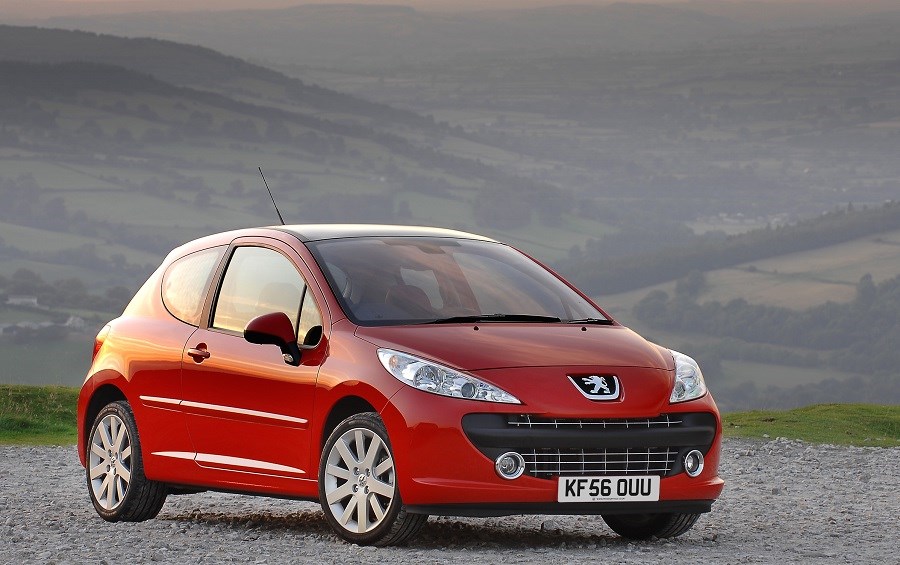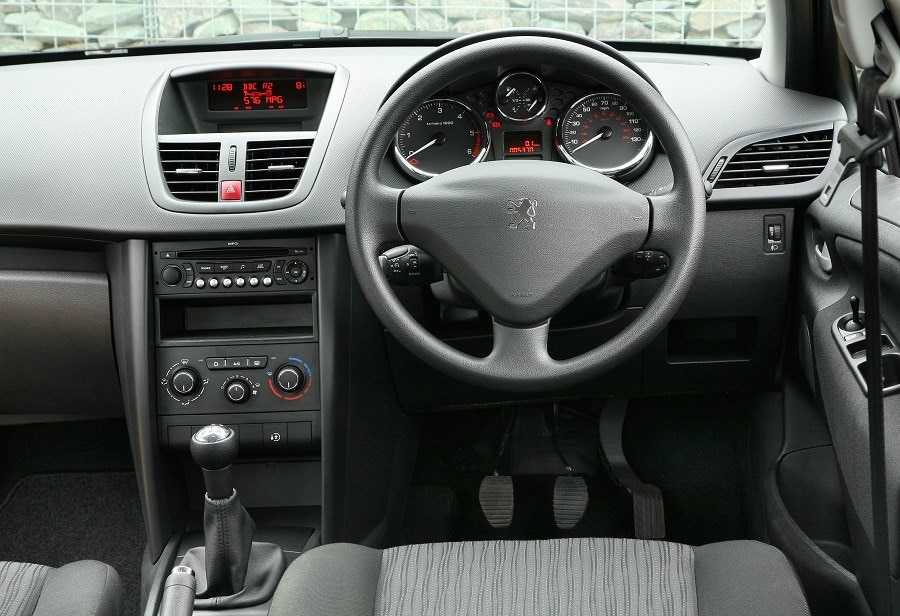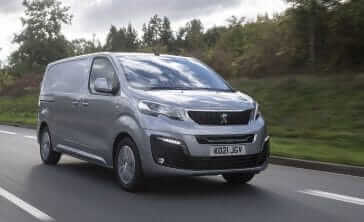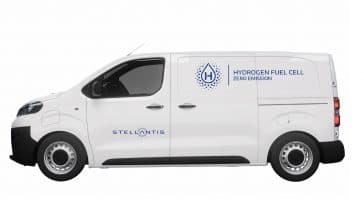Model Review
The Peugeot 207 reached showrooms in 2006 as a replacement for the popular 206, with both being credible rivals to the Vauxhall Corsa and Ford Fiesta.
The 207 was built on all-new underpinnings — a chassis known as ‘Platform One’ — and was offered with a good range of petrol and diesel engines from launch. It was also very well-equipped for the price. As with the previous 206, the new 207 was offered with three- and five-door bodystyles, as well as an estate (SW) and a convertible (CC).
Peugeot also made a big deal of the full-length ‘Cielo’ panoramic glass roof fitted to the supermini, which admittedly is a stylish feature, and quite a rarity on models at this price point at the time.
In 2007 Peugeot launched its 207 as a GTI hot hatch, with a BMW-sourced 1.6-litre turbocharged petrol engine, although it was a bit of disappointing for enthusiasts —
particularly for those fans of the iconic 205 GTI.
Latest model
Peugeot announced a facelifted version of the 207 in 2009, which features a redesigned new look, a broader choice of colours and further chrome detailing.
The updated model also benefitted from a more powerful GTI version, with the power increased to 172bhp. Elsewhere in the range, the diesel engines got even cleaner, with the introduction of a new Economique diesel variant. This offered low CO2 emissions of 99g/km, which helped to qualify the car for free road tax.
Towards the end of the 207’s lifetime, a new Millesim trim level was also introduced as the final hurrah for the 207, alongside a garish limited edition S16 model to celebrate the French manufacturer’s success in rallying.
In 2012, Peugeot replaced the 207 with a new-generation 208 model — such was the firm’s naming policy at the time.
Value for money
When new in 2006, you could pick up a 207 for under £9,000, which goes to show how much prices have inflated since then given a brand-new Peugeot 208 (the replacement for the 207) costs from £14,500.
Standard equipment is reasonable, with entry-level models coming with a CD player, power steering, steel wheels and electric windows, but not a lot more. Sport models seem the best examples, with these versions coming with alloy wheels and air-conditioning.
The French supermini hasn’t held its value particularly well, which means that used prices prices start low. High mileage, but tidy, examples can be bought for under £1,000, although around £1,300 will buy something more presentable. We saw a 2006-registered model with 60,000 miles on the clock, in ‘S’ trim and with good service history for £1,295. Facelifted examples are good value as well, with around £2,000 buying a 2010 car in mid-spec Verve trim that’s covered around 70,000 miles.
The stylish convertible models tend to hold their value a bit better, although they are still one of the cheapest ways into roof-down motoring, and are fantastic in the summer months. Expect to pay just under £2,000 for a well-presented and low-mileage example of the 207 CC. Estate ‘SW’ variants also cost similar to the convertible.
Looks and image
Compared to the somewhat drab, if likeable, 206, the 207 was actually quite a smart-looking model — offering more attractive looks than the Ford Fiesta at the time, for example. The 207 was noticeably bigger than the previous car, although it was proportioned well. The large front grille won’t appeal to all, but it gives the 207 a distinctive look out on the road. A range of bold colour options also help to add to the French supermini’s style, while the optional panoramic roof was a welcome touch on superminis at the time, and came as standard on special edition Cielo variants.
The interior is everything you should expect from a supermini at the time — plenty of cheap plastics, a dark-looking cabin and little in the way of luxury. On the plus side, it comes with a high central display for the radio at the top of the dash on more expensive trim, while the overall layout is good, with a decluttered layout and easy to use dials. The seats are also very comfortable, and the 207 is surprisingly refined for a cheap supermini.
While not offering the fun nature of models such as the Ford Fiesta, the 207 is a simple and easy car to drive, which makes it great for urban duties. The steering is light at low speeds, but gains weight at higher speeds making it easy to place and quite enjoyable on twisty roads. The gearbox, however, is a disappointment and is exceptionally vague, meaning smooth changes are near-impossible. As mentioned earlier, the 207 majors on comfort and offers a relaxing and fuss-free driving experience, which will be appealing to certain buyers.
Space and practicality
Despite the 207 being quite a bit bigger than the 206 it replaces, it’s not quite as spacious as you might think. The 270-litre boot is average for the class, although it should still provide ample room for plenty of shopping bags and a couple of smaller suitcases.
However, rear space is disappointing. There isn’t enough space in the back for average-sized adults to sit in comfort, with the 207 having compromised legroom and headroom. The optional panoramic glass roof only makes the situation worse, too. On the plus side, there’s plenty of storage space around the cabin, as the model has plenty of large cupholders as well as a large air-conditioned glovebox that can act as a cool bag.
While the 207 doesn’t have the same level of safety aids you would find on the latest crop of superminis, it’s still a safe car to this day. Euro NCAP awarded the 207 a five-star safety rating when it was tested in 2006, with the model coming with six airbags, anti-lock brakes and electronic stability control as standard.
Engines
Peugeot offered the 207 with a good range of engines throughout its lifespan.
The 207 was launched before the rise of turbocharged petrol engines took hold of the small car market, meaning that on the petrol engine side, you have the choice between naturally-aspirated less powerful 1.4-litre engines and a faster 1.6-litre unit, which is the one to go for.
The 1.4-litre unit was offered with the choice of 75bhp or 90bhp outputs, while the 1.6-litre generated 110bhp. The latter unit can be had with an automatic gearbox, too, alongside a five-speed manual gearbox, which is fitted to the rest of the range.
The punchier 207 GTI utilised a BMW-sourced turbocharged 1.6-litre petrol engine producing 172bhp. It means the model can accelerate from 0-60mph in under seven seconds and keep going to a top speed of 137mph.
When it comes to the diesel engines, there is the option between 1.4- and 1.6-litre turbocharged engines. The former produces 70bhp and the latter is offered with 90bhp or 110bhp. The more powerful units are the best fit for the 207 with increased performance, but little compromise on fuel economy.
Running costs
Buyers wanting to slash their running costs should look at the diesel engines fitted to the 207. The greenest model in the range is the ‘Economique’, which is an aerodynamically-efficient version that offers a claimed fuel economy figure of 74mpg, with CO2 emissions of 99g/km. The latter figure means that this 207 qualifies for free road tax, with models emitting under 100g/km of CO2 at the time ensuring they got free vehicle exercise duty. The other diesel engines return between 59 and 67mpg, with CO2 emissions varying between 110 and 126g/km. The petrol engines are harder to recommend for drivers covering longer distances, although for urban drivers, they are no less efficient than other petrol-powered models from rivals.
Insurance groups range between five for the entry-level 1.4-litre petrol engine, and rise to 25 for the GTI model, although these are comparable to rivals. Parts are readily accessible, and servicing costs should be affordable as well.
Things to look out for
Sadly, the 207 doesn’t have a very strong reputation for reliability, which means there are a few things you should look out for when buying a used example. The four-speed automatic gearbox is known for being troublesome, while you should also thoroughly check the electrics and ensure everything works as it should, as 207s have been hit by faulty wiring and problems with the fuse box.
Rivals
If you’re looking at buying a Peugeot 207, key rivals include the Ford Fiesta, Vauxhall Corsa and Renault Clio. You could also consider the Mazda 2, Fiat Grande Punto and Hyundai i20 within a similar price bracket.
Depreciation
With the Peugeot 207 going on sale over 12 years ago, prices have about hit rock bottom for the model, which means it’s a good value option for new drivers and those looking for a well-rounded supermini on a budget. Later models can still cost as much as £6,000, though, for low-mileage examples.





